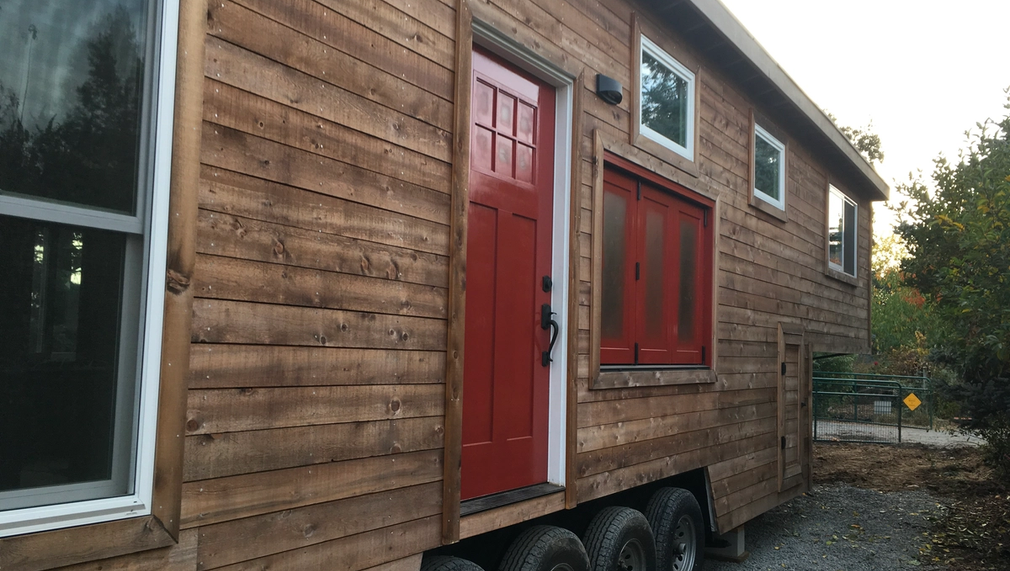Tiny House Miracle
Would you help bless someone with housing affordability? Start a revolving loan fund that creates affordable tiny house parking spots in back yards.

What is the primary issue area that your application will impact?
Housing and Homelessness
In which areas of Los Angeles will you be directly working?
County of Los Angeles
In what stage of innovation is this project, program, or initiative?
Pilot or new project, program, or initiative
What is your understanding of the issue that you are seeking to address?
Los Angeles County has an acute housing affordability crisis. The City of Los Angeles’ most recent housing element, for example, calls for adding 61,000 new residential units per year, a goal some experts say is impossible. The City of LA has produced about 16,700 units annually since 2014. including only 1,650 affordable units per year. According to the Los Angeles Housing Services Authority, the County of Los Angeles has some 550,000 households that are severely at-risk of losing housing because they are paying more than they can afford. How will these affordable homes be built? Where will the money come from? No-one has satisfactorily answered those questions, but all agree on one thing: Los Angeles must reimagine its affordable housing production plans, because what we are doing now isn’t working.
Describe the project, program, or initiative this grant will support to address the issue.
This program intends to show that much smaller housing can help reduce LA’s housing affordability woes. Just as tiny shelters have recently been used to rapidly and affordably expand the city’s shelter supply, movable tiny houses can be placed as backyard cottages, using ordinances already in place, within months at a fraction of the cost. LA City’s accessory dwelling unit ordinance makes it possible to legally permit movable tiny houses as ADUs, but has no provision to ensure that new ADUs are used as affordable housing. New ADUs can be offered at market rate or used as vacation rentals. Our 7 year long pilot program matches five single family residence owners with five program participants who either already own a tiny house. The homeowner agrees to rent the tiny house “pad” (a cute parking place with utility hookups installed) for $1 per month during a 12-18 month trial period and affordably after that, in exchange for a forgivable loan to cover construction and permitting costs. Program participants agree to reimburse the loan fund for the full amount of the hookup installation during the trial period, and then enjoy below-market housing costs for the remaining time. Sherman Oaks Presbyterian will use LA2050’s $75,000 award to establish a revolving loan fund that provides each homeowner with a loan. The project director will help the homeowners obtain contractor bids and apply for city permits.
Describe how Los Angeles County will be different if your work is successful.
Public resources alone will not solve LA's affordability crisis. Market-rate housing development is largely aimed at more upscale buyer demographics. The charitable sector wants to be engaged in this but there are few avenues for employing their resources to increase affordable housing stock. Apart from Habitat for Humanity, what charities are building privately-financed housing in Los Angeles? Very few, and because Habitat's model uses volunteers and (helpfully) targets larger households, it lacks the capacity to scale up to the extent needed. New methodologies must be found that allow charitable organizations to help with a crisis that few believe they have any capacity to address. YIGBY, in San Diego, is doing similar work, targeting church owned land. We think that our fast and cost-effective method for creating short-term housing affordability can engage churches and smaller nonprofits now, while at the same time opening up the opportunity for larger projects down the road.
What evidence do you have that this project, program, or initiative is or will be successful, and how will you define and measure success?
The measurable outcomes for this project are: 1. By the end of year 1 the program will have created four-five newly constructed tiny house pads that are occupied by five movable tiny house owners. 2. By the end of year 1 the program will have begun recovering loaned money and will be nearing the ability to fund a fifth tiny house pad from the revolving loan fund; 3. By the end of year 1, donors and grantors will have added $75,000 to the revolving loan fund; 4. By the end of year 1 five churches or other nonprofit organizations will have agreed to participate the program as impact investors by establishing an affordable housing endowment of at least $5,000.
Approximately how many people will be impacted by this project, program, or initiative?
Direct Impact: 4
Indirect Impact: 12